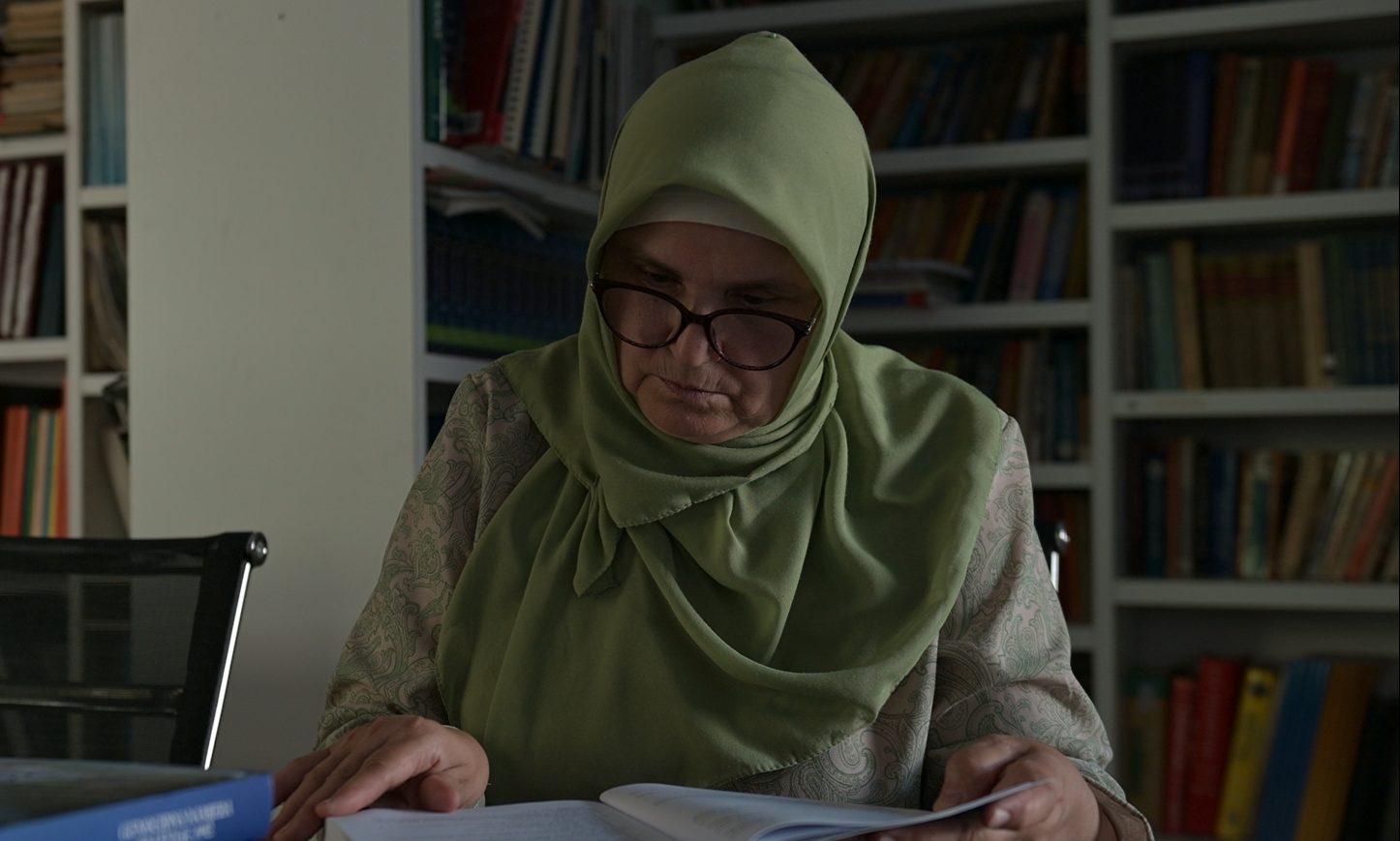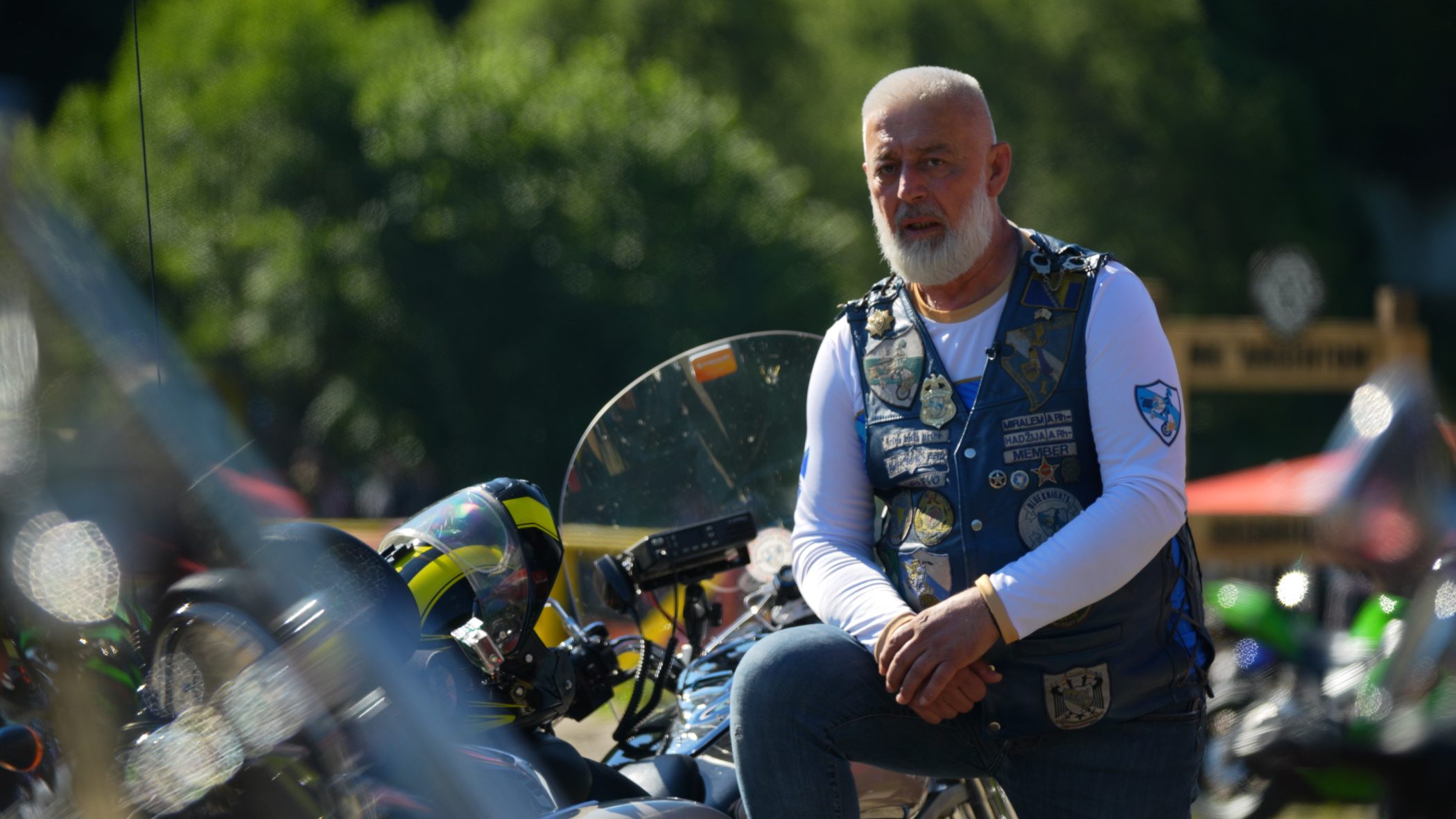This post is also available in: Bosnian
Ten kilometres from the village of Stricici, the “Centre for Development and Development of the Countryside” agricultural farm is located on a plateau. There, there are hangars for livestock, hay bales, tractors and employees who take out cows from the barns. Apart from employees and purchasers of milk, no one comes to this plateau. Only one day per year this place is visited by hundreds of people, who are former prisoners of the detention camp at Manjaca.
In the morning of November 15, the first buses were parked in front of the entrance. Former detainees came from several cities to mark the 22th anniversary of the closure of the detention camp. They recognise and salute each other. At the entrance of the Centre, the photo of the former gate, above which is the inscription “Detention camp – entrance forbidden” is placed.
They are looking at the photos that were taken in 1992 by foreign television crews. There is one soldier on one of the pictures, but none of the survivors know his name.
“This one was never called by his name”, explains one of the former detainees, pointing to the soldier on the photo.
“We only knew the nicknames of those who were beating us: Zoka, Spaga, Babin”, says another detainee.
In front of the closed gates of the Centre they are waiting until it’s 11 o’clock, when the official programme for marking the anniversary of the detention camp’s closure is set to begin. As confirmed by the court verdicts, more than 5,000 Bosniaks and Croats passed through here.
Among those who came to commemorate the suffering are Sabrija Becirbegovic and Anes Makul. Sabrija is a former prisoner of the camp, and Anes had never been here before. He says that he was 11-years-old when the war started, and when he left Bosnia and Herzegovina.
“My grandfather was captured in 1992 and spent nearly half a year in Manjaca. It’s my first time that I’m here,” explains Makul.
Marking the anniversary began with speeches of representatives of associations of detainees and politicians. Among the seven speakers is also one former detainee from Manjaca. After the speeches, more than 400 people went to visit the hangars in which Bosniaks and Croats from Kljuc, Sanski Most and Prijedor were imprisoned during 1992.
Walking between the hangars, former detainees recognise the places in which they were beaten and tortured.
“Here, they beat Ibro on the day they took us out,” says one of them, and adds: “But, I feel most sorry for the boy who was with us. I will never forget that.”
Slaughter behind the tractor
Some came with children and wives, they are entering the hangars and show them where they have been located. Sabrija also stops in front of one of the hangars and shows the place where detainees were beaten.
“The torture and beatings were the hardest, especially at the reception”, says Sabrija, who was brought to this camp from Omarska in mid-1992.
“The next day after we arrived, they took out one of our friends in front of the camp, we called him Djuzin. They took him out and slaughtered him behind the tractor… There, behind the tractor, they carried out the slaughter,” says Sabrija and shows the place where it happened.
At the trial of Radoslav Brdjanin and Milomir Stakic for crimes committed in Prijedor, it was proved that a group of prisoners from Omarska were brought to Manjaca in August 1992. Several men were killed that night.
“Upon arrival in Manjaca, detainees had to spend the entire night in a locked bus. That night, the police officers who are Bosnian Serbs, and who accompanied the bus called out three men to come out. The next day, the corpses of those three men could be seen. Before the detainees were allowed to enter the detention camp, one policeman stabbed one of them, and ordered another one to beat his corpse with a tractor hub,” reads one of the verdicts of The Hague Tribunal.
The exact number of those killed in this detention camp is not known. It is stated in the verdicts that detainees were regularly beaten, and that some of them died because of the consequences of the brutal beating.
The survivors say that even today they still suffer the consequences.
“Trauma remains permanent. We still dream of the detention camp. Insomnia,” says Sabrija.
Listening to the confessions of former detainees, Makul says that he recalled many things that his grandfather told him.
“One forgets that, but when some occasion comes, or when something reminds me, I start slowly to unroll the film and remember all those stories and suffering through which he had to pass,” explains Makul.
He also says that staying in the camp permanently marked the life of his grandfather who died a few years after he was released.
“The detention camp marked his mental state because he constantly talked and wrote about it. He was bearing the consequences and that reflected on his health during the five years after he was released, and when he died,” adds Makul.
By visiting the hangars, former detainees recounted how they spent in detention whole days, without enough food and water. During the trial in The Hague Tribunal, it has been proved that the detainees in Manjaca were kept in unsanitary conditions and without enough food.
“Twice a day, the detainees were given soup and a thin slice of bread… Some were so hungry that they ate grass out of despair,” it reads in one of the verdicts.
Faith in reconciliation
Survivors say that all what they survived has been proven and documented long time ago, but that they do not believe that the perpetrators will ever be convicted.
“It goes slowly and it is not yet started with those who were beating us, who tortured us, they never come to light,” says Sabrija.
For crimes committed in Manjaca, the courts in Bosnia and Herzegovina condemned four people to a total of 37 years in prison. The former Manjaca camp guards, Zeljko Bulatovic, Sinisa Teodorovic and Zoran Gajic were convicted before the District Court in Banja Luka on 11, eight and six years respectively, while the Court of Bosnia and Herzegovina sentenced Nikola Kovacevic to 12 years in prison.
Kovacevic was found guilty of having participated in taking a group of civilians in Manjaca, and for beating them when they entered the camp.
“We have to convey this to our offspring. I cannot wait to speak about what happened to me, to my grandchildren, because they are still small and they do not know. But I will certainly convey it to them. As for me, I will never forgive. I will never forget, and regarding reconciliation, this state is such that we have to live together, whether we like it or not,” says Sabrija.
Upon his arrival in Manjaca, Makul said that he believes in reconciliation, and he did not change his opinion after meeting with survivors.
“I still believe in reconciliation. But I also believe that this will never be forgotten. Some people will forgive, some will not. But we need to deal with all of what has happened here,” says Makul.
After an hour and ten minutes into marking the anniversary, the location of the former detention camp, which is today the “Centre for the Development and Improvement of the Countryside” is empty. The organisers have picked up the banners, and they took with them the memorial plaque which they bring here each year. They say that they have repeatedly asked for its installation here, but that they have never received approval.
The idyllic green plateau in front of the Centre remains empty, and apparently nothing could evoke what happened here in 1992.





